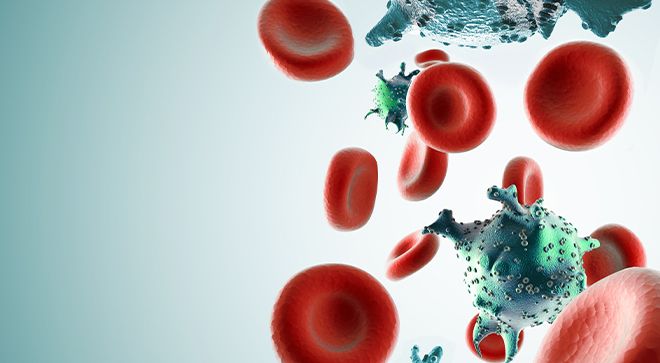News
Article
Vonjo Improves Thrombocytopenia, Anemia in Patients With Myelofibrosis
Vonjo was also shown to improve overall survival in patients with myelofibrosis treated with Vonjo in the real-world setting.
Vonjo improves platelet counts and hemoglobin levels in patients with myelofibrosis.

Improvements in thrombocytopenia and anemia were observed in patients with myelofibrosis treated with Vonjo (pacritinib) in the real-world setting, as demonstrated in findings from a retrospective study presented at the 2024 SOHO Annual Meeting.
According to the National Cancer Institute, thrombocytopenia refers to a condition in which patients have a lower-than-normal number of platelets in the blood, and this can result in excessive bleeding from wounds and easy bruising. Anemia is a condition when patients have a low count of red blood cells.
Findings showed that patients with a platelet count below 100 x 109/L (which is considered low) at baseline (74 patients) experienced an early increase in platelet count following treatment initiation that was maintained throughout the observation period. Additionally, an early increase in median hemoglobin (a protein inside red blood cells that carries oxygen from lungs to tissues and organs) was reported in all patients, and this increase was sustained throughout the observation period. Patients with hemoglobin level of less than 8 g/dL (a level that indicates anemia) at the start of treatment (35 patients) experienced a hemoglobin increase of nearly 1 g/dL by day 30.
Notably, patients who received prior treatment with Jakafi (ruxolitinib; 69 patients) experienced an increase in platelet counts and hemoglobin levels following initiation of Vonjo. At baseline, the median platelet count and median hemoglobin level in this population was 91 x 109/L and 8.7 g/dL, respectively. At day 360, the median platelet count and median hemoglobin were 97 x 109/L and 10.4 g/dL, respectively.
“In addition to spleen and symptom benefits observed in previous clinical trials, real-world outcomes demonstrate stability or improvement in thrombocytopenia and/or anemia in patients with myelofibrosis treated with [Vonjo],” lead study author Michael Marrone and colleagues, wrote in a poster presentation of the data. Marrone is an assistant professor in the College of Medicine, Department of Public Health Sciences, at the Medical University of South Carolina in Charleston.
This retrospective study evaluated the clinical and demographic characteristics, treatment patterns and outcomes of patients with myelofibrosis treated with Vonjo in the United States. In February 2022, the FDA granted accelerated approval to Vonjo for the treatment of adults with intermediate or high-risk primary or secondary (post-polycythemia vera or post-essential thrombocythemia) myelofibrosis with a platelet count below 50 x 109/L.
Primary outcomes assessed were changes in platelet count and hemoglobin levels at the initiation of Vonjo — the index date — and in 30-day intervals post-index. Overall survival (the time when a patient with cancer is still alive; OS) was assessed from index date through the end of the observation period.
The study included 142 patients with myelofibrosis treated with Vonjo at a median follow-up of six months. In this population, 119 patients had complete laboratory values available at the index date and at least one once during follow-up.
Notably, at treatment initiation, 28.5% of patients had severe thrombocytopenia with a platelet count of less than 50 x 109/L, and 29% had severe anemia with a hemoglobin level of less than 8 g/dL. The median age was 72 years, and the median time from diagnosis to Vonjo initiation was 13.4 months. The median time from index to the last dose of Vonjo or the end of the observation period was 5.3 months. In patients with a median follow-up of more than six months (78 patients), the median duration of Vonjo treatment was 8.5 months.
Additional data showed that the 12-month OS probability for patients with myelofibrosis treated with Vonjo was 69.4% in the overall cohort, which study authors noted was a favorable outcome compared with historical JAK inhibitor controls.
Patients who received Vonjo as a first-line therapy (52 patients) had a 12-month OS probability of 77.3%. Those with severe thrombocytopenia treated in the first-line setting (19 patients) had a 12-month OS probability of 75.2%.
Among patients treated with Vonjo in the second-line (59 patients), the 12-month OS probability was 72.1%. Patients previously treated with Jakafi prior to Vonjo had a 12-month OS probability of 65.3%.
For more news on cancer updates, research and education, don’t forget to subscribe to CURE®’s newsletters here.




